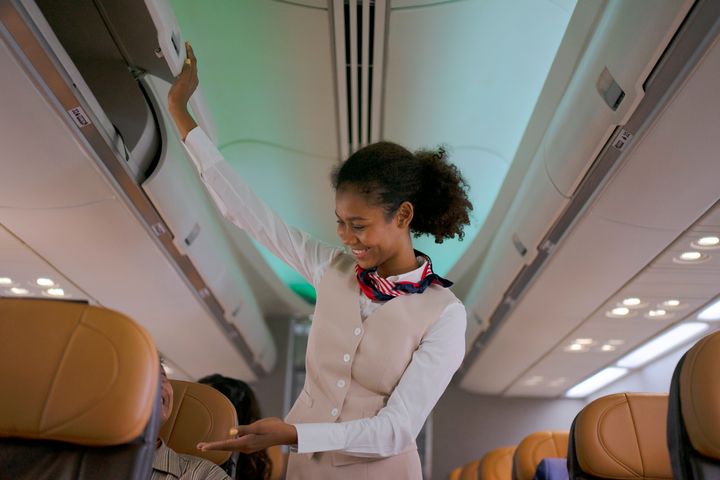
Typically on a flight, cabin crew take to their seats just before and during take-off, landing, and any other time they’re instructed to do so by the captain, such as during severe turbulence.
One thing you may have noticed is that when they do take to their seats, they tend to sit rigidly on their hands.
This can be a little disconcerting the first time you spot it, especially since we often look to cabin crew for reassurance during flights (oh, just me?) but actually, it’s standard procedure for the crew to sit like this and it ensures theirs and everybody else’s safety should the worst happen.
Why cabin crew sit on their hands
According to the experts over at Simple Flying, this is called the ‘brace position’ and while it can vary between airlines and regions, it comes down to passenger and crew safety. The aim with this seating position is to keep the body in a rigid pose so that if there is an unplanned emergency, the body is less damaged.
Cabin crew members must sit with their back and neck firmly against the jump seat with their knees and feet together, feet firmly placed on the ground. Then, the hands are either placed on top of the knees or under the thighs, elbows held inwards.
The purpose of this is to keep body movement restricted, limiting the chance of injury if there’s impact. It often varies to whether the jump seat is facing towards the cockpit or the aircraft tail. If facing forwards, most airlines state that staff should have their feet positioned slightly behind their knees and if facing backwards, staff should have their feet slightly pushed forward.
Some airlines also insist that staff tilt their chins to their chest to protect against whiplash injury.
So, while sitting on their hands might seem a little odd, it’s best for everyone on-board.
How cabin crew protect passengers in an emergency
The safety of cabin crew is essential in ensuring not only their wellbeing but that of the passengers, too.
According to the Civil Aviation Authority, cabin crew are tasked with protecting passengers in an emergency by knowing where all safety equipment is and knowing full evacuation procedures if there is a ‘significant safety risk’.
They also have to ensure passengers don’t block the escape of themselves and others by trying to take baggage and belongings with them.